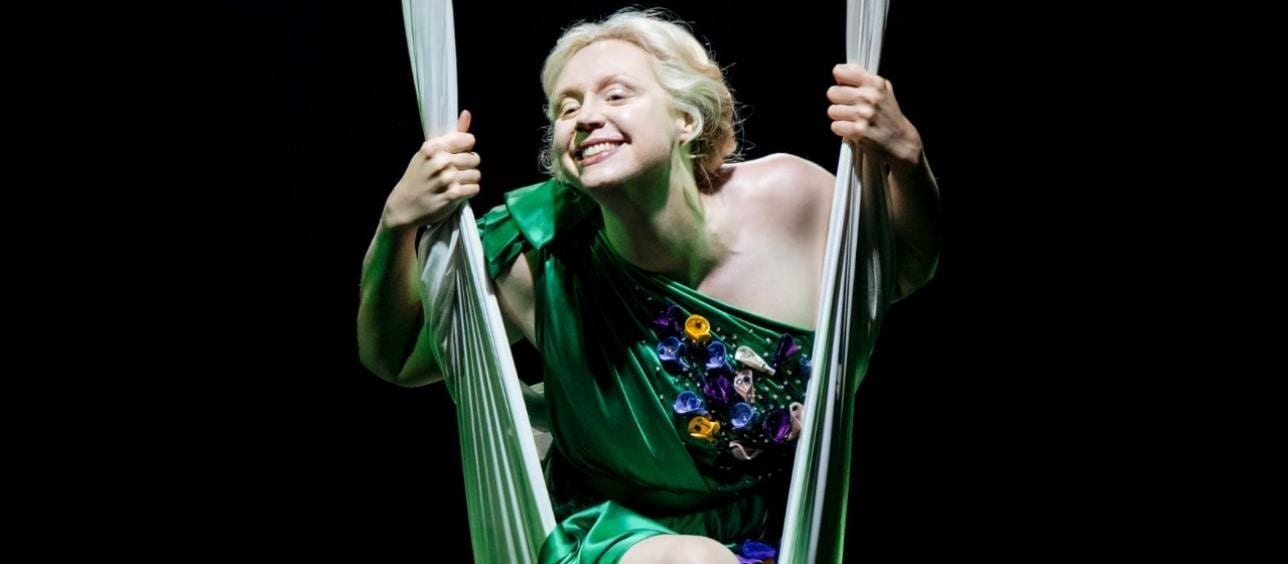Like many others looking to escape the formulaic doom and gloom of lockdown, Thursday night found me tuning in to YouTube watch the latest play from National Theatre At Home: A Midsummer Night’s Dream. Directed by Nicholas Hytner, and starring Gwendoline Christie (best known as Brienne of Tarth in Game of Thrones), The Bridge Theatre became a magical dream world of donkies and fairies, injecting a little bit of fantasy into the start of British Summertime.
While there are many different interpretations of A Midsummer Night’s Dream, there are none as completely and utterly bonkers as Hytner’s; he brings out the very best of Shakespeare’s comedy in a modern and chaotic light.
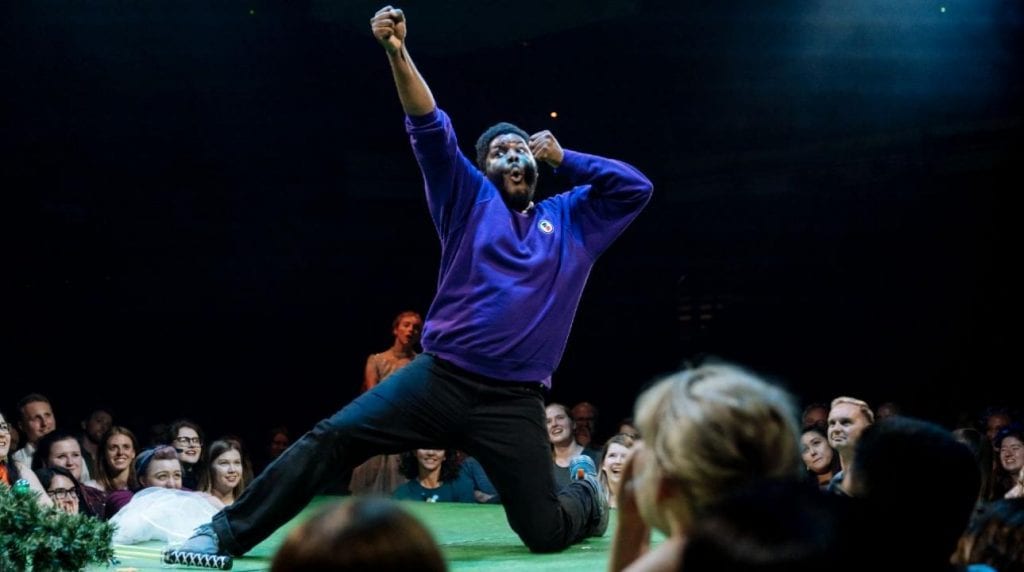
A Midsummer Night’s Dream follows two pairs of young lovers who escape to a forest, which soon becomes rife with mystical characters and adventures as a result of a fairy king and queen’s argument. Hytner’s adaptation of Shakespeare’s play follows his original narrative but, this time, has an added twist. Instead of Oberon, Titania tells Puck to sprinkle the potion, which reverses the story’s traditional conventions by having the woman as the all-powerful manipulator. As a result, it is Oberon who falls in love with Bottom, implementing a contemporary and homosexual layer to the overlapping love stories.
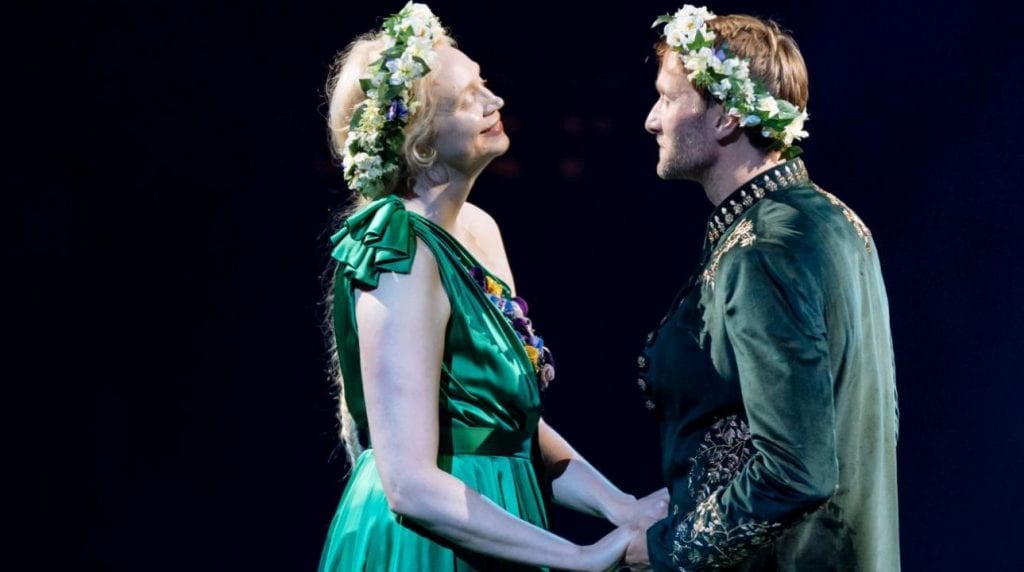
Hytner also switches up the adaptation by having Gwendoline Christie multi-role both the subjugated Hippolyta, Queen of the Amazons, and Titania, a powerful woman ready to enact revenge on her husband. The juxtaposition between these two characters is masterfully realised in a way that presents women in the play as both conservative and trapped, as well as mischievous and powerful. The same is done for Oliver Chris, who plays both Theseus and Oberon throughout.
Set in a modern landscape with contemporary dress and vernacular (the use of “LOL” had me giggling, even if it was quite jarring), the play opens with a dark and sombre tone as we see Hippolyta enclosed in a glass box, paralleling themes from The Handmaid’s Tale as we witness women forced into marriages they don’t want. However, we soon switch to the chaos of the forest with the gleaming lights, colours and silks as fairies hang from the stage.
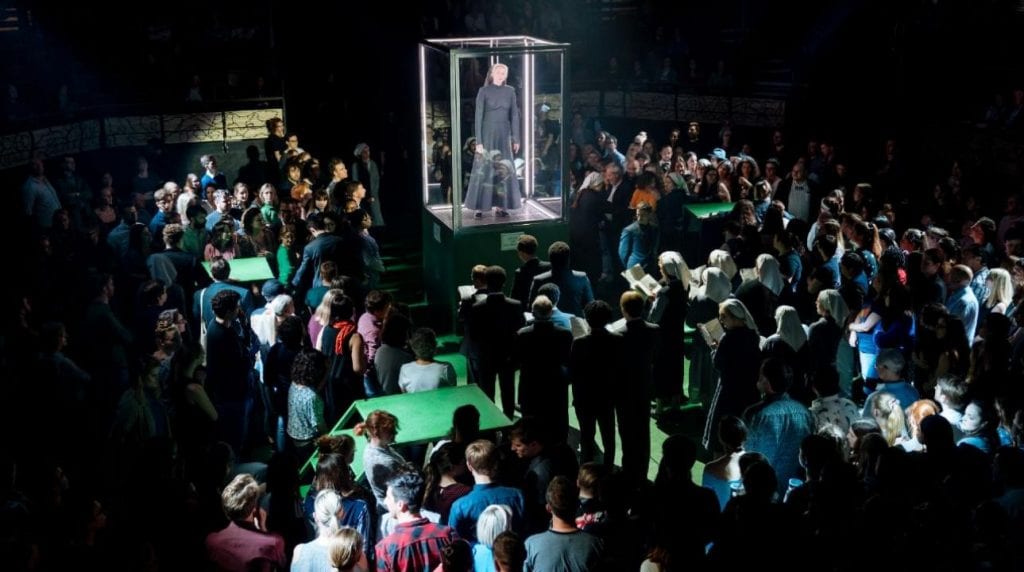
What this production does exceptionally well, compared to others, is the use of the audience and props. Characters disappear into the audience and then pop up in the most unexpected places. During the scene when Oberon and Bottom are taking part in a very exciting striptease, they’re surrounded by dancing fairies and even members of the audience as what can only be described as a magical mosh-pit is created around the bed, whilst Beyonce’s Love on Top is playing. There are actors doing somersaults on silk swings, and big inflatable balls for the audience to play with; the whole piece is immersive, chaotic, whilst also manging to be approachable and mischievous from start to finish, encapsulating the comical tone of Shakespeare’s work perfectly.
The play deals with the representation of sexuality and the performativity of gender as identities are slipped on and off, and conventional gay tropes are ridiculed and abandoned. I also regularly found myself in tears from laughter; seeing Helena is strutting about, complaining about her inability to pull was as hilarious as it was relevant and inventive.
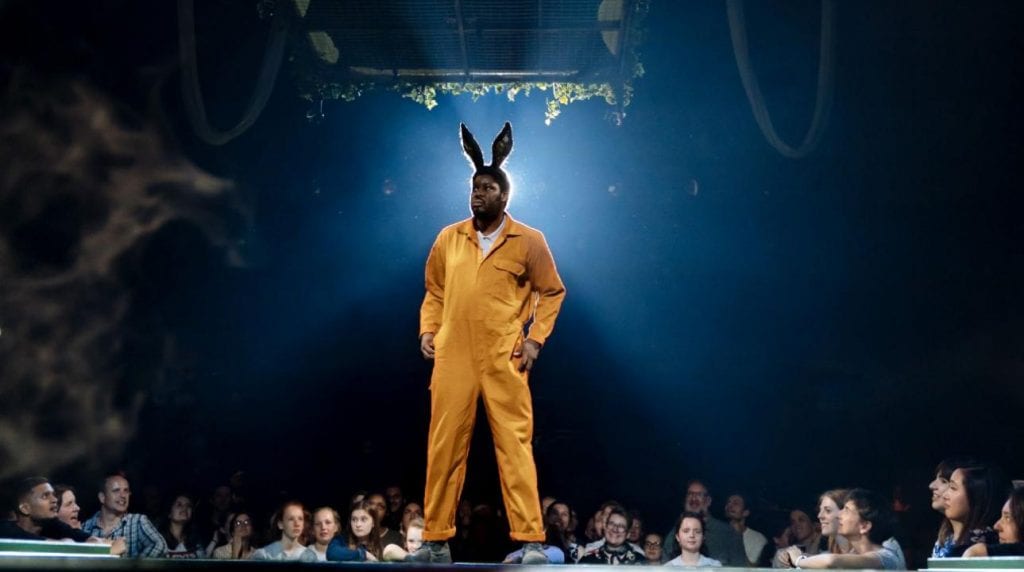
Overall, Hytner does a brilliant job of bringing the harmless mischief of magic to life, while exploring the potential danger it can easily evolve into. This adaptation is a refreshing approach to a play that has been done numerous times before, immersing the audience in the performers’ fun while adding a modernist tone.
This production of A Midsummer Night’s Dream shows that if Shakespeare is done right, it can be fresh and relevant to all types of audiences.
Words by Lucy Lillystone.
